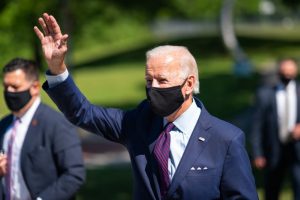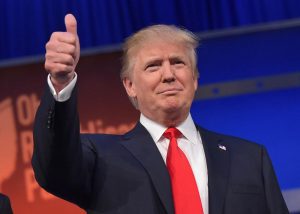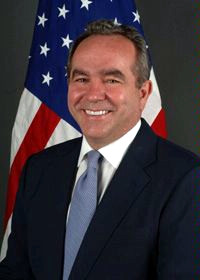
By Commodore Anil Jai Singh, IN (Retd)
New Delhi. 20 June 2020. As President Joe Biden assumes office as the 46th President of the United States of America in perhaps the most tumultuous presidential transition in US history, his ability to address the enormity of the challenge he is faced will be put to the test. Whether it is redeeming his country’s lost prestige on the international stage or restoring the faith of the US population in the office of its Chief Executive or in healing the damage within, his actions will be keenly observed across the globe. As per media reports he has put together a robust 100 day plan to set things in order and it is expected that its immediate focus will be on addressing the challenge within. Reverberations from events within the world’s most powerful and influential nation are felt globally and the events of the last few months culminating in the ignominious events on Capitol Hill have done no credit to the nation and its reputation as a mature democracy. Healing the damage within will be a greater challenge than addressing the schisms created by the disruptive Trump foreign policy in the USA’s engagement with the world. President-elect Biden has outlined his vision of restoring multilateralism in the US foreign policy and to work together with partners to strengthen the US position in the world.
In the Indo-Pacific.
The initial years of the Trump presidency were marked with great anxiety in the Indo Asia-Pacific (the term used by the US to describe the region then). The US withdrawal from the Trans-Pacific Partnership (TPP) which led to its demise was a blow to the other countries in the region and allowed China to cleverly fill the void with the recently concluded RCEP. This also coincided with Xi Jinping’s Belt and Road Initiative (BRI), a plan unprecedented in ambition and scope for maritime domination from its own mainland all the way to Europe and to shape the strategic maritime global discourse thereafter on its own terms. He unnerved his two strong defence partners in the region, Japan and South Korea by asking them to pay for the security they were being provided. Some of the ASEAN members, traditionally allied with the US also began to doubt the assurances of US commitment in the region thus allowing China to exploit faultlines within ASEAN. There was little or no direct criticism of China’s belligerence and bullying of its smaller maritime neighbours in the South China Sea and even led President Dutarte of the Philippines to distance himself from the US and look towards China despite the Chinese snub over the PCA ruling in its maritime dispute with that country in 2016.

It was during President Trump’s tour of Asia in 2017 that the approach to the region saw a distinct change. He acknowledged the existence of the Indo-Pacific as a strategic entity which led to the redesignation of the US Pacific Command as the US Indo-Pacific Command. He also assured his allies of the US commitment to regional security. The National Security Strategy that followed in December 2017 clearly identified China and Russia as revisionist powers and it was this document that set the tone for the remainder of his tenure. With a China-baiter like Mike Pompeo as the Secretary of State, the US adopted an aggressive and strident approach to China’s belligerence in the South China Sea with frequent Freedom of Navigation Operations (FONOPS), Carrier Battle Group(CBG) deployments, US naval presence in the Taiwan Straits and open support to Taiwan including sale of military hardware, something that previous administrations had been wary of doing. Mike Pompeo’s statement in July 2020 indicting China for all its transgressions in the South China Sea minced no words and was backed with bipartisan endorsement by the US government. This was perhaps the first direct indication of the US approach to China and the Indo-Pacific region and allayed many apprehensions of a likely softening of the US position against China with a change at the helm. During his presidential campaign, President-elect Biden clearly articulated his views on the relationship with China in much the same terms ; one could therefore expect that while the approach may become more nuanced and the confrontational rhetoric may get toned down, the approach is unlikely to change much. A lot though will depend on China’s equation with the new administration and the exit of the Trump-Pompeo combination. For the new President, the shadow over his business relationship with China may also be a factor.
The recently declassified draft document “US Strategic Framework for the Indo-Pacific”, clearly highlights the importance of the Indo-Pacific to the US for several reasons ; the loss of its pre-eminence in this region which is home to 60% of the world’s population and generates about 60% of the global GDP will impact US interests across other regions as well. This region is also critical for the US to blunt China’s rise and its unambiguously articulated ambition to become the global numero uno by 2049. Thirdly, the US cannot compromise its leadership position in ensuring a rules-based international order and a Free and Open Indo-Pacific (FOIP) which is critical in this age of globalisation, connectivity and trade dependencies. The COVID crisis has brought to the fore the importance of maintaining resilient global supply chains thus further underlining the importance of ensuring the safety and stability of the global commons. The economic importance of this region and the challenge being mounted by China to re-orient the existing order into one with ‘Chinese characteristics ‘ has set alarm bells ringing far and wide with even peripheral Indian Ocean powers like France and traditionally Euro-centric countries like Germany and the Netherlands articulating their own Indo-Pacific strategies which are aligned with the prevailing approach of other democratic free market economies within the region. From a maritime security perspective, too a robust and effective rules-based order is important because 80% of the world’s trade travels over the sea with a large proportion of that transiting through the waters of the Indo-Pacific and is vulnerable to the multitude of traditional, non-traditional and transnational security challenges that plague this region. The fact that even though piracy in the Horn of Africa has been largely curtailed, Op Atalanta, the EU backed multinational initiative begun in 2008 has been given a further extension despite the cost and effort of maintaining a European Naval Task Force in the Indian Ocean and the multinational Combined task Forces CTF 150 and 151 also continue to operate in the western Indian Ocean highlights the enormity of the security challenges in the maritime domain.

The appointment of experienced Asia hand Kurt Campbell, widely regarded as the architect of President Obama’s pivot to the Pacific, as the Indo-Pacific Coordinator in the new administration clearly indicates that this region will retain its primacy in US foreign and security policy with any major strategic policy shift very unlikely. In retrospect, the pivot fell far short of its objectives and allowed China to develop its artificial islands and fixtures in the South China Sea; it also did not censure or act against China for its maritime belligerence and is considered one of President Obama’s major foreign policy failures. Hopefully though, the right lessons on dealing with China would have been learnt and Kurt Campbell’s deep understanding of the region will shape the right responses.
The US-India Bilateral Equation
From an Indian perspective, the existing momentum of the steady upward trajectory in the US-India relationship is likely to continue. President-elect Biden has described the Indo-US relationship as the defining partnership of the 20th century and has emphasised its importance as an integral part of its Indo-Pacific strategy. The importance of a strong India as a counterbalance to China transcends party lines in the US and is also highlighted in the declassified draft strategy document. In the last year of the Obama presidency, India was elevated to the status of a major defence partner, which is the closest to being a formal ally of the US. The process of moving forward on the foundational agreements which had been hanging fire for many years due to Indian apprehensions after the first one, GISMOA (General Security of Military Information) was signed in 2002 also gained momentum. LEMOA ( Logistics Exchange Memorandum) was signed in 2016 and was followed by the signing of COMCASA ( Communication Compatibility and Support Agreement ) in 2018. The last of the four, BECA (Basic Exchange and Cooperation Agreement) was inked during the 2+2 Ministerial Summit in November 2020 . The institutionalisation of a 2+2 Ministerial Summit and its positive outcomes, a convergence on issues pertaining to Indo-Pacific security and commitment to the Quad framework has further strengthened this relationship. The expanded scale and scope of Exercise Malabar has sent a strong message in the region and India’s bilateral maritime engagement with US allies in the region has further enhanced interoperability and led to a deeper understanding of the regional security imperatives. The US recognition of ASEAN’s centrality in the Indo-Pacific security architecture converges with India’s views. The purchase of more than USD 20 Bn worth of military equipment through the Foreign Military sales (FMS) route including the P8I Long Range Maritime Patrol Aircraft , the C-17 Globemaster and C-130 Hercules aircraft, the Chinook and Apache helicopters and the soon to be inducted Sikorsky MH-60 naval multirole helicopter and the Guardian drones has added considerable depth and capability to India‘s security over land and sea. However, while these areas of convergence have developed a momentum of their own, there are still speed breakers which need to be addressed in this relationship. The threat of US CAATSA (Countering America’s Adversaries through Sanctions Act) sanctions if India goes ahead with the purchase of the S-400 system from Russia is one such. Issues over trade and tariffs is another; the US removed India’s preferential trade status during the Trump presidency. The effect of US sanctions on the India-Iran relationship is also of concern.
Addressing India’s Concerns
The momentum of the Indo-US bilateral relationship under the Trump administration notwithstanding, the approach, perhaps typical of the man, had a transactional element which came to the fore time and again. It was reflected in the ‘or else…’ tone in the US ‘request’ for the HCQS medicine to combat Covid or the ultimatum to stop trading with Iran. Even the defence relationship seemed less than strategic at times- the hard-sell of defence equipment to the largest defence market in the world but a marked reluctance to part with any meaningful technology despite initiatives like the Defence Trade and Technology Initiative (DTTI) etc. and India’s efforts at indigenisation and self-reliance. There was a clear focus on including India as part of the Pacific construct in the Indo-Pacific but a lack of engagement with the Indo of the Indo-Pacific which is India’s primary area of interest.
Unlike the 20th century cold war when ideological differences divided the world into two distinct power blocs, the portents of the current US-China rivalry, now being termed Cold War 2.0, is very different. Security considerations are independent of economic engagement ; while the US-China tension in the South China Sea is quite palpable, China-US trade continues, albeit with restrictions as does trade between China and the rest of the world including India. The global backlash against China after the Wuhan outbreak and its debt trap diplomacy notwithstanding, China remains at the very centre of the world economy and has the ability to shape global economic outcomes. The USA has a major trade deficit of USD 317 billion with China and the extent of US-China trade till November 2020 despite the bitter trade war between the two was in excess of USD 500 Bn as compared to USD 70 Bn between India and the US over the same period. Infact, despite the Trump bluff and bluster, the US trade deficit with China actually increased in 2020 vis-s-vis 2019. The Biden administration, which is expected to take a more pragmatic approach towards the economy in the larger interest of the country will therefore need to reassure India through its economic policies and diplomatic outreach that the Indo-US relationship will not be impacted by the trajectory of US-China economic relations.
The incoming President has also indicated that he is not averse to reviewing the JCPOA with Iran as desired by his European partners and in the larger interest of regional peace. However, that notwithstanding, India should emphasise the importance of its bilateral engagement with Iran and the mutual benefit from its capacity building efforts in Iran including Chahbahar port and its strategic development of the North South Trade Corridor (INSTC) providing an access from the Arabian Sea to the landlocked Central Asian Republics bypassing Pakistan and by association, China. Isolating Iran through sanctions has been counter-productive and has provided an open invitation to China to fill this power vacuum which in fact should be avoided. A Chinese presence in Iran severely compromises India’s energy security as more than 60% of India’s energy requirement is sourced from the Gulf and has to transit through the narrow Straits of Hormuz which is controlled by Iran. A Chinese naval presence in Chahbahar or any Iranian port in the Straits of Hormuz and its control of the Pakistani port of Gwadar barely 75 nautical miles away will give it a stranglehold on the tanker traffic entering and exiting the Arabian Gulf and heading eastwards thus severely impacting India’s and the world’s energy security and hazarding the movement of tanker traffic through this strategically vital SLOCs. A major Chinese presence in the western Indian Ocean will severely dent India’s pre-eminent position as the leading Indian Ocean maritime power, its ability as a net security provider in the region and will also compromise India’s advantage at the eastern approaches to the Indian Ocean while greatly alleviating China’s ‘Malacca Dilemma’.
The Indo-US bilateral relationship is critical as part of a larger regional security construct as also in the bilateral context and is as much in the US’s interest as in India’s. It is therefore important that this relationship becomes a truly ‘comprehensive strategic partnership’ as it is often referred to and in every sense of the term. Over the years this relationship has seen great improvement. However, there are a number of issues that need to be addressed, only a few of which have been highlighted and many more will keep emerging as the relationship evolves. For a strong foundation and an enduring framework to emerge, a positive and pro-active approach is essential. If indeed this relationship is going to be the ‘defining partnership of the 20th century’, the USA must respect India’s economic imperatives, its strategic autonomy and the choices it makes in its engagement with the world.
(Commodore Anil Jai Singh is a veteran submariner and the Vice President of the Indian Maritime Foundation. He is keenly interested in matters maritime and speaks and writes on the subject in India and abroad. The views expressed are open source and personal. He can be contacted on ajaisingh59@gmail.com )




























































































































